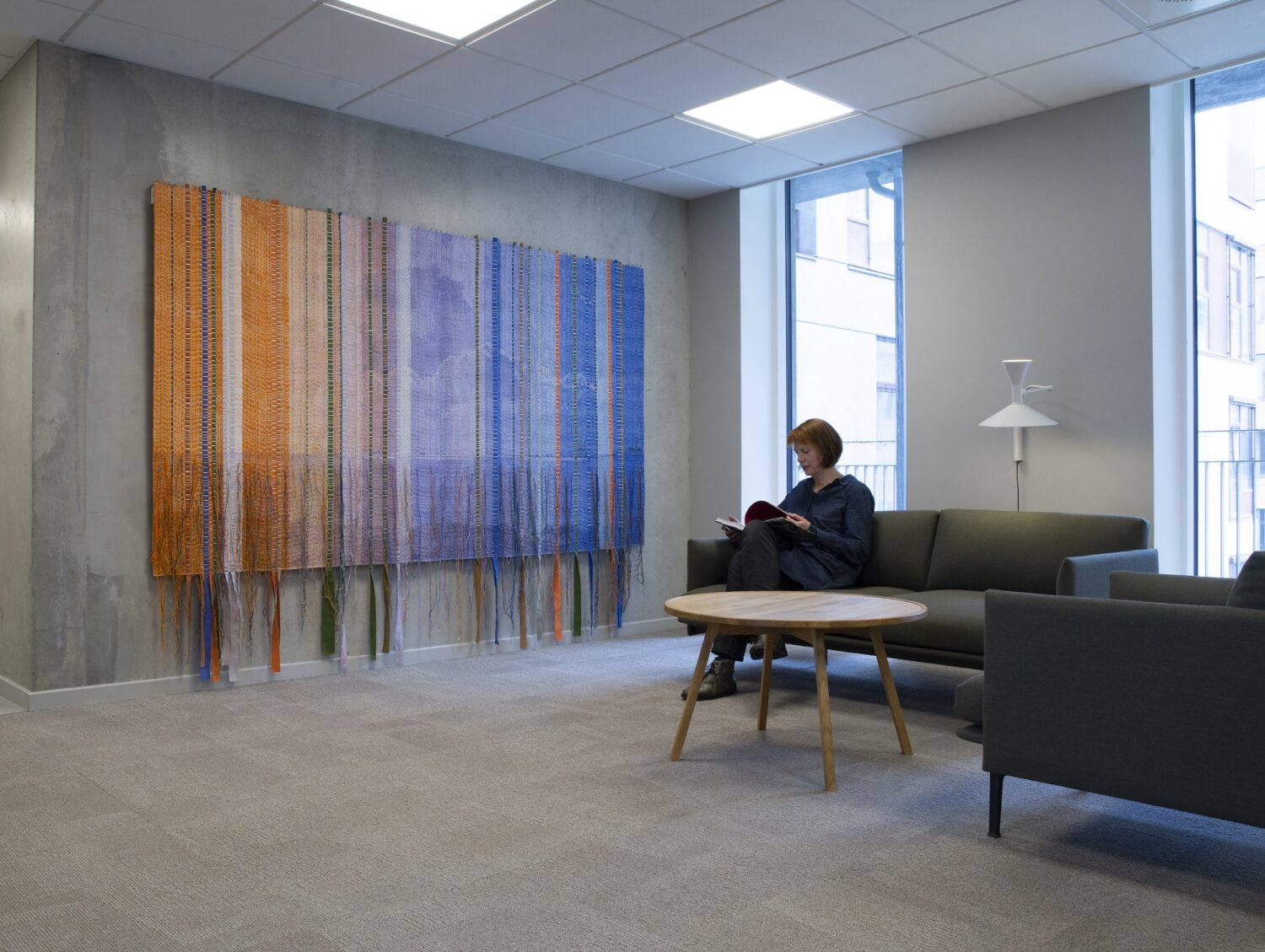Sanne Ransby’s woven tapestries are far from the only artworks that have found their way into the courtrooms of Østre Landsret. You can also find works by Per Kirkeby, Richard Mortensen, and Tal R. However, Sanne Ransby is pleased that her woven double artwork hangs in a smaller courtroom where, among other things, family law cases are handled.
“There is one artist represented in each room, and for example, there are large and rather dramatic works by Arne Haugen Sørensen in the largest room, which is used for cases like gang-related ones. And that is quite fitting. But for that reason, it also makes sense for my artwork to adorn a smaller room for more intimate cases like family law,” explains Sanne Ransby.
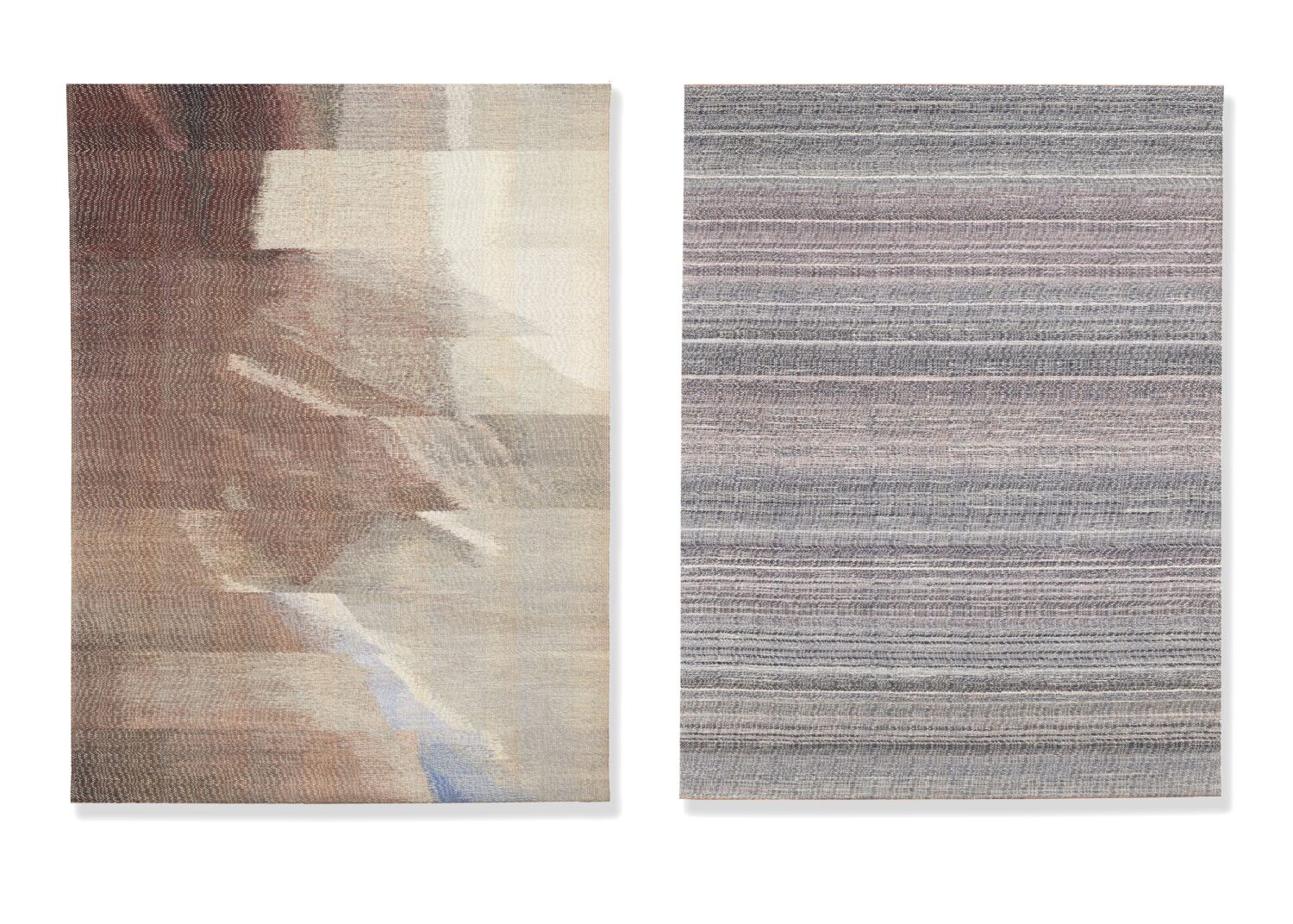
Two sides of the same (legal) case
The artwork is called “Transient Gesture” and is a double artwork consisting of two significantly different woven tapestries. The materials and colors overlap in the two tapestries, but while one tapestry contains angular figures depicting a disrupted movement, the other portrays a more flickering, hazy expression with greater contrasts. The same movement is interpreted in two ways.
‘The artwork was purchased by the National Arts Foundation at an exhibition, and I hadn’t woven it specifically for any particular place. But when it was later hung in one of the smaller courtrooms in Østre Landsret, it suddenly gained an extra dimension. The artwork is precisely two sides of the same case, just like in a legal case. Two versions of the same story. If I had come up with that concept myself, it would have seemed too obvious. But now, given its placement there, I couldn’t wish for a better interaction between space, function, and artwork,’ she says.
Poetic materiality
The artwork in Østre Landsret is an example of how textile art functions in public spaces. As Sanne Ransby expresses it:
‘I believe that textiles bring humanity to our public spaces. It is both very concretely poetic with its materiality and tactility, and at the same time unpretentious. A textile artwork can connect spaces, art, and people. Most people have an immediate approach to the artworks because of the materials. So the artwork can ‘vibrate’ between the familiar and the monumental. And textile art also has some practical functions included because they can contribute to acoustics and warmth, just like their predecessors, the historical tapestries.’
This also applies to the artwork “Transient Gesture” and its placement in the courtroom.
‘I feel that the artwork provides closeness and warmth to the space. And I hope that it will be a bit more challenging to maintain the coldness and hostility that can otherwise be part of, for example, family law cases when the space is decorated in this way.’
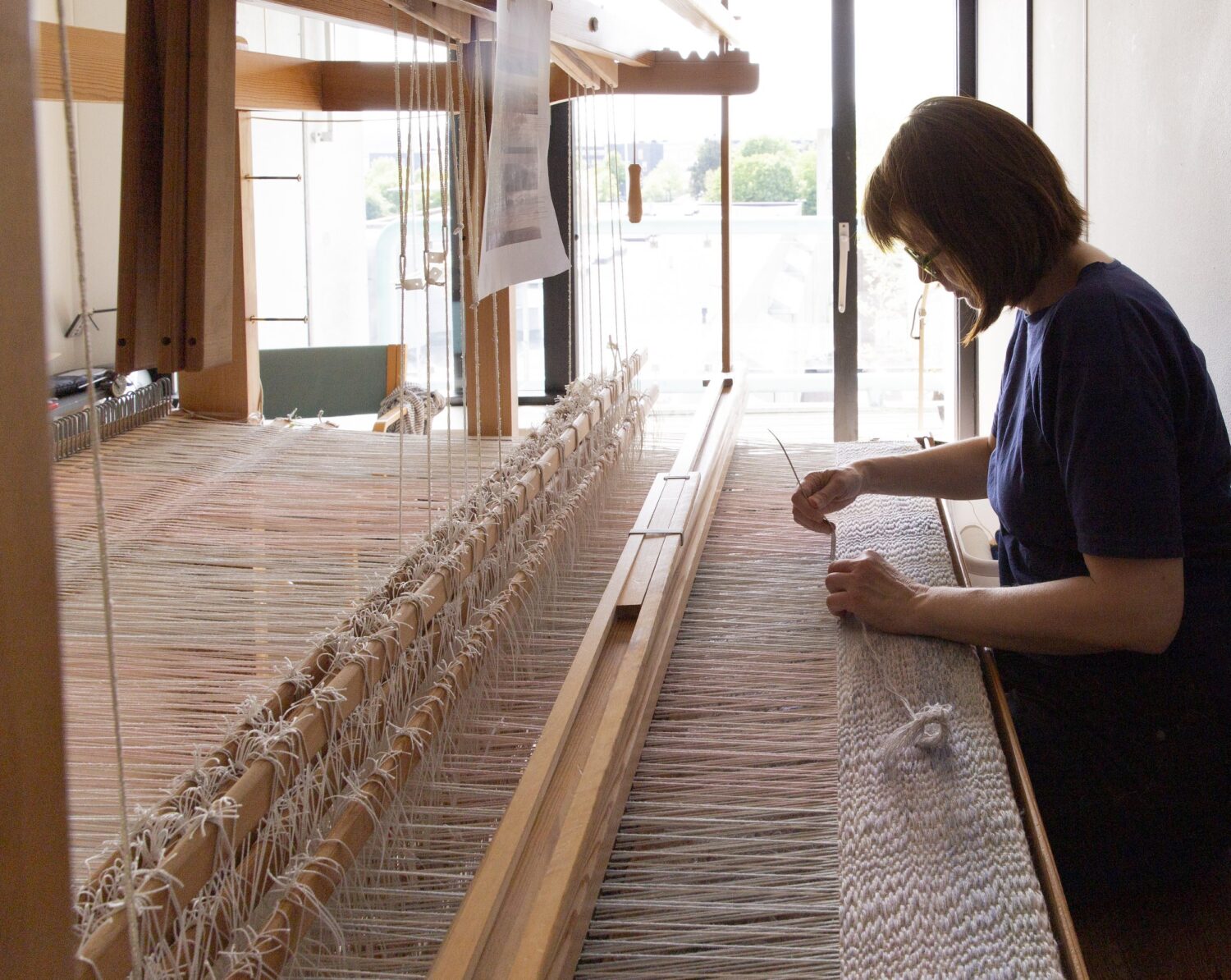
Textiles soften the public space
Sanne Ransby graduated from the weaving program at the Jutland Art Academy and completed her studies in 1991. Her entry into textile art was through a stay at a folk high school, where initially she politely declined plant dyeing due to memories of her mother’s somewhat murky plant dyeing experiments during her childhood. Nevertheless, it was the fascination with dyeing that later led her into weaving and has shaped the direction of her work with textiles in urban spaces.
‘Textiles have a special quality in urban spaces because they are so physical and can bring softness to a harsh space. And I am repeatedly captivated by the way materials and colors merge and how the physical surroundings interact with the artwork, such as the wind or the light from outside.’
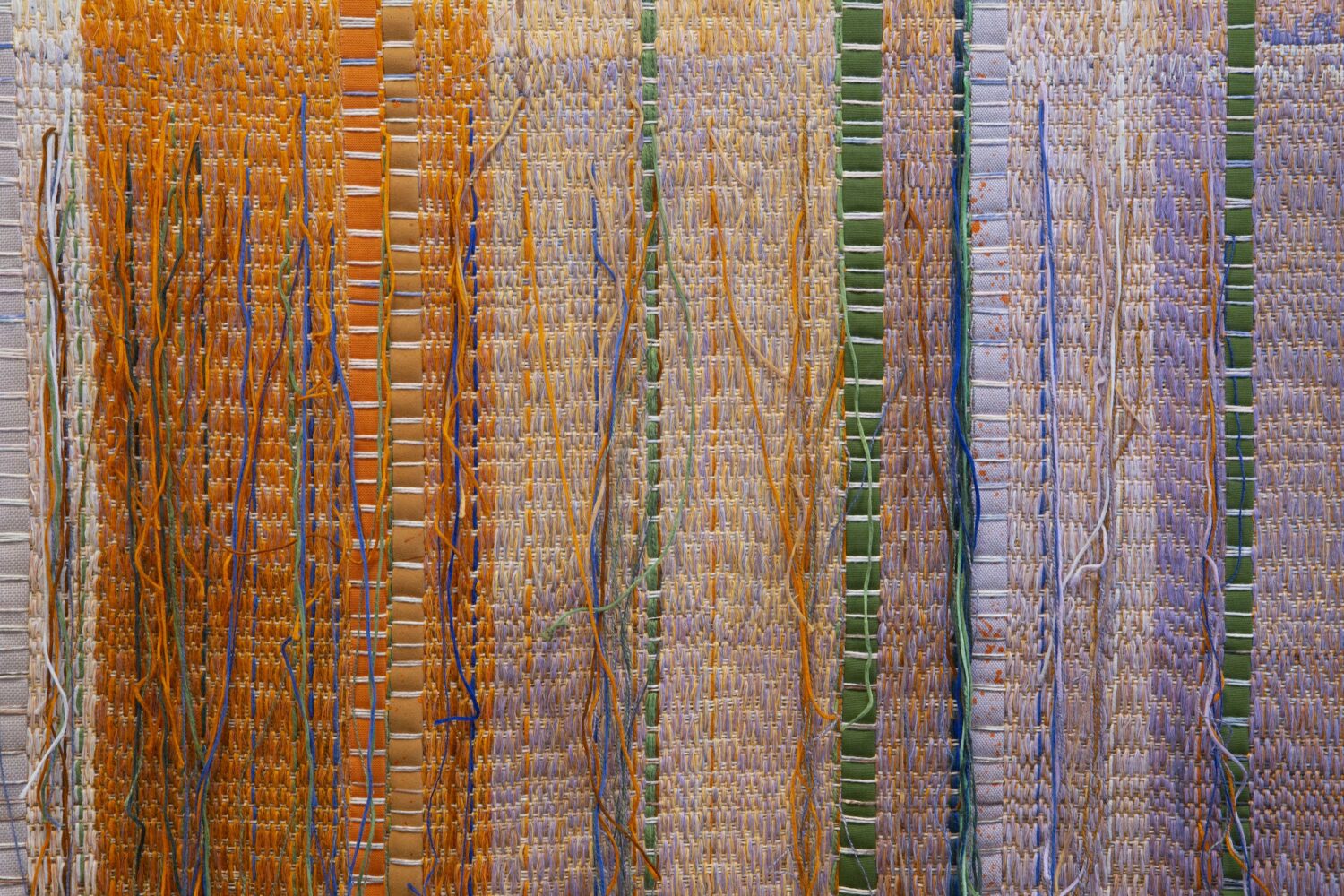
Bringing nature into the space
One of Sanne Ransby’s recent works is an excellent example of this, namely the artwork ‘BUGT,’ which hangs in the groundbreaking building, Generationernes Hus, in the new district of Aarhus Ø. This building brings together youth housing, elderly housing, daycare centers, housing for people with disabilities, co-living communities, and shared social functions such as a café, clinic, and cultural space under one roof, with a view of the surrounding sea and the Risskoven forest.
In contrast to “Transient Gesture,” Sanne Ransby was familiar with the location and purpose when the artwork for Generationernes Hus was commissioned. The artwork hangs in a living room at the end of a long corridor, where one part of it signifies an open space from a distance, and the artwork adds a sense of homeliness to the room. Again, the artwork consists of multiple elements: two woven tapestries and a picture wall with several small artworks created by both Sanne Ransby herself and other artisans and artists.
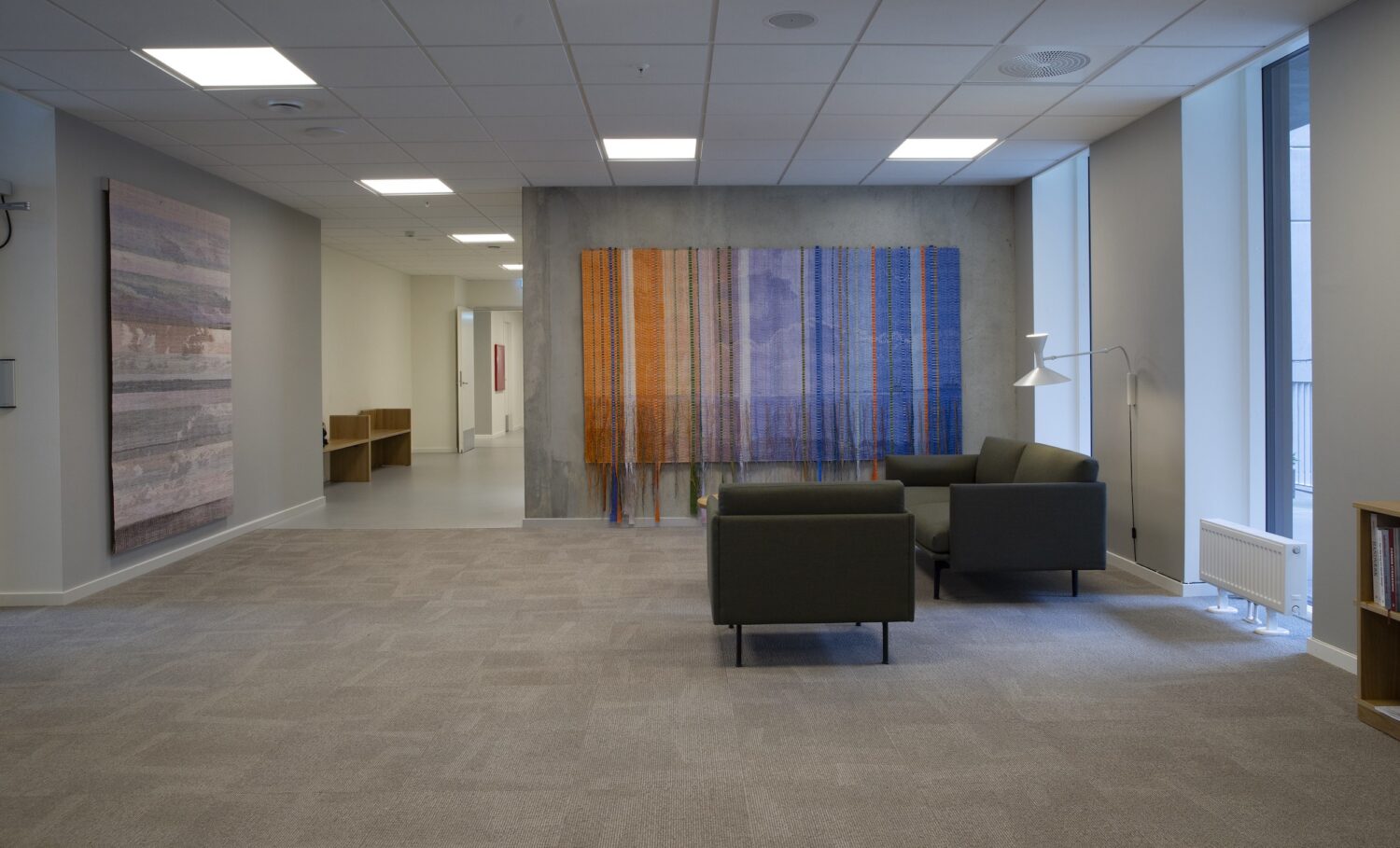
A greeting from the surroundings to the residents
One piece appears with distinctive fabric structures and vibrant colors, ranging from sunset orange to sea or container blue, while the other evokes images of hazy sea views in a faded photo album. What the artworks have in common are small nods to the surroundings around Aarhus Ø—the harbor, the sea, the forest—in the form of fringes reminiscent of eelgrass, small woven cranes in the horizon, and mosquitoes and plants from the nearby bike path on the picture wall. And when the balcony doors at both ends of the living room are opened, the artwork’s long fringes ripple like seaweed in the ocean.
‘The purpose of my artwork is to anchor both young and old residents in the new building, reminding them of where they are in the world. That there is both an unpretentiousness and reminders of vast landscapes and horizons. The young may recognize the waves and the plants from the bike path, and the elderly may feel inspired to go out and experience the forest and the beach again. And although I haven’t overexplained the motives in the artwork, I believe I succeeded because several users of the space say they are always captivated by the artwork and feel a desire to explore it,’ says the weaver about her artwork.
Theme: Urban Space
In connection with the Architecture Capital 2023, Formkraft explores crafts and design in public spaces and built environments. This thematic publication provides a platform for the latest research and work within crafts and design.
Where and how is contemporary crafts and design established in the urban space? What actors are involved? What lessons can we learn from history?
Additional reading
The Formkraft archive holds a treasure trove of articles about our shared history of crafts and design. These articles tell the story of professional development and Danish cultural history from 1948 to the present. Search for various topics in the archive or browse through the journals on the Journal Shelf.
Atmospheric layers in a human space
Receive a newsletter
Sign up for Formkraft’s newsletter and receive information about new articles as well as tips on relevant conferences and books. Sign up here.

